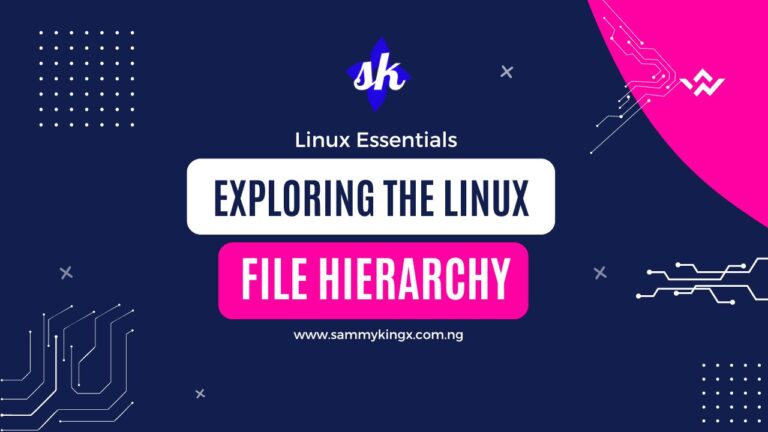Book Appointment Now

Package Management in Linux: A Beginner’s Guide
One of the key advantages of using Linux is its robust package management system. Package management in Linux refers to the process of installing, updating, and removing software packages efficiently and effectively. It’s like having a personal assistant that takes care of keeping your software up to date and ensures your system runs smoothly. Let’s dive into the world of package management and explore why it’s such an essential aspect of the Linux ecosystem.
Understanding Software Packages
Before we delve into package management, let’s understand what a software package is. A software package is a collection of files and information necessary for a particular software application to function. It typically includes the program itself, along with libraries, configuration files, documentation, and other dependencies required for the software to run properly.
In Linux, software packages are distributed in a standardized format, which makes it easier for users to install and manage software. These packages are designed to be installed, removed, or updated as a single unit, ensuring that all the necessary components are handled together.
Why Package Management Matters
Package management in Linux offers several benefits that contribute to a seamless software management experience:
Centralized Repository: Linux distributions maintain centralized repositories that contain thousands of software packages. These repositories are curated and maintained by the distribution’s developers and community, ensuring that the software is safe, stable, and compatible with your system.
Easy Installation: With package management, installing software becomes a breeze. Instead of searching for software on the web, downloading installation files, and manually configuring them, you can simply use a package manager to install software with a single command.
Dependency Management: Software often relies on other software packages, known as dependencies, to function properly. Package managers automatically resolve these dependencies, ensuring that all the required packages are installed together. This prevents the “dependency hell” situation that can occur in other operating systems.
Security and Updates: Package managers handle security updates and patches seamlessly. When a security vulnerability is discovered in a software package, the package manager ensures that the updated version is available as soon as possible. You can update all your installed packages with a single command, keeping your system secure.
Consistency and Compatibility: Package managers ensure that the software you install is compatible with your specific Linux distribution and version. This consistency helps maintain system stability and prevents conflicts between different software packages.
Rollback and Uninstall: If an update causes issues or you no longer need a particular software package, package managers make it easy to roll back to a previous version or completely uninstall the package, along with all its associated files and dependencies.
Popular Package Managers in Linux
Different Linux distributions use different package managers, each with its own unique features and package formats. Here are some of the most popular package managers:
APT (Advanced Package Tool): APT is the package manager used in Debian-based distributions, such as Ubuntu, Linux Mint, and Pop!_OS. It handles packages in the .deb format and provides tools like apt-get and apt for package installation, removal, and updates.
Yum and DNF (Dandified YUM): Yum and its newer counterpart, DNF, are package managers used in Red Hat-based distributions, such as Fedora and CentOS. They handle packages in the .rpm format and provide an easy-to-use interface for package management.
Pacman: Pacman is the package manager used in Arch Linux and its derivatives. It offers a simple and lightweight package management system with support for packages in the .pkg.tar.zst format. Pacman is known for its speed and simplicity.
Zypper: Zypper is the package manager for openSUSE and SUSE Linux Enterprise. It provides a command-line interface for managing packages in the .rpm format and offers features like dependency resolution and package verification.
Flatpak and Snap: Flatpak and Snap are newer package management systems designed to work across different Linux distributions. They provide a sandboxed environment for applications, allowing users to install and run software independently of the underlying system.
Using a Package Manager
Let’s go through a simple example of using a package manager to install a software package. We’ll use APT, as it’s one of the most widely used package managers.
To install a package using APT, you can use the apt install command followed by the package name. For example, to install the text editor Vim, you would run:
$sudo apt install vimThe sudo command is used to gain administrative privileges, as installing packages typically requires elevated permissions. APT will then download the Vim package and any necessary dependencies, and install them on your system.
To update installed packages to their latest versions, you can use the apt update and apt upgrade commands:
$sudo apt update
$sudo apt upgradeThe apt update command fetches the latest package lists from the repositories, and apt upgrade upgrades the installed packages to their newest versions.
If you no longer need a package, you can remove it using the apt remove command:
$sudo apt remove vimThis will uninstall the Vim package, but it will leave any configuration files intact. If you want to remove the package and its configuration files, you can use the –purge option:
$sudo apt remove --purge vimConclusion
Package management in Linux simplifies the process of installing, updating, and removing software. It ensures that your system stays secure, stable, and up to date with the latest software releases. Each package manager provides a user-friendly interface and powerful features to manage software efficiently. By leveraging the power of package management, you can focus more on using your Linux system productively and less on the intricacies of software installation and maintenance.



